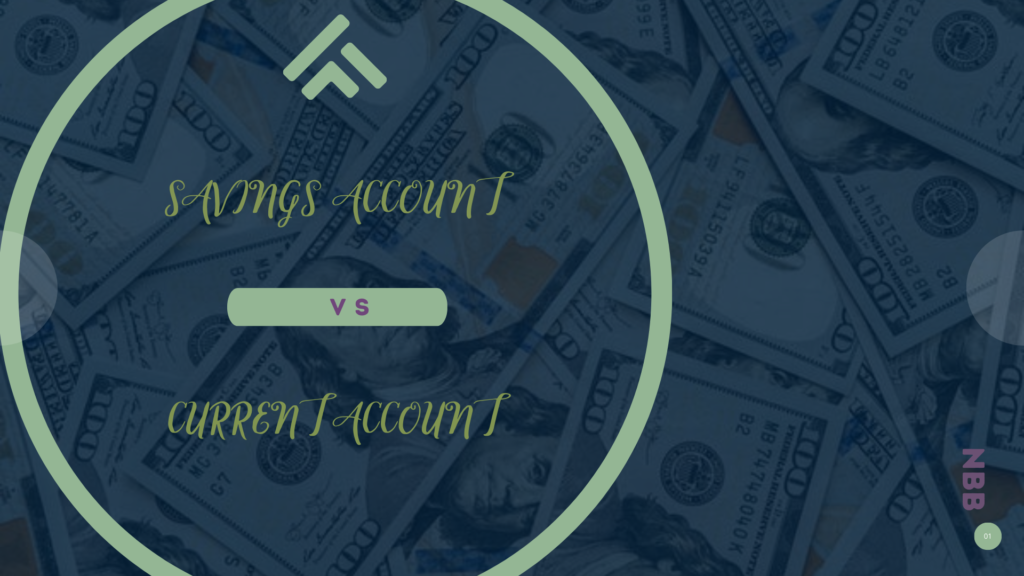Difference between savings account and current account with opening requirements.
We are constantly presented with the choice between a Savings Account and a Current Account when we withdraw cash from an ATM.
Each of these two types of accounts was developed with a certain set of users and their unique monetary needs in mind.

There are numerous banks in Nigeria like UBA, GTB, Zenith, Access, Fidelity, unity etc. Each of these banks offer their customers the opportunity to open current accounts and savings accounts respectively.
Yet there are significant distinctions between the two accounts. Continue reading to know the difference between a savings account and a current account with opening requirements.
But before we go into the difference between a savings account and a current account with opening requirements let’s get to know the meaning of a savings account and a current account.
What is a current account?
A current account is a banking service provided by financial institutions to customers who plan to make a high financial transactions on a daily basis.
One drawback of this type of account is that it may not earn interest, although it is useful for day-to-day transactions.
Even though current accounts are available to individuals, enterprises, trusts, associations, and public/private institutions are the most common users.
In the past, this type of account did not earn interest on deposits, but recently, several financial institutions have begun doing so.
There is the option to go over your account balance with an overdraft facility when you have a current account.
The required minimum balance in these accounts is higher than in others.
There is no minimum or maximum amount that can be deposited or withdrawn, but the account holder must maintain a positive balance in order to conduct financial transactions.
A wide variety of subcategories exist within current accounts, allowing organizations, legal entities, trusts, and others to choose the one that best suits their requirements. Here are a few examples:
- Premium current account
- Standard current account
- Packaged current account
- Foreign current account
Do well to choose the bank you wish to create an account with before deciding on a type of current account, as each bank has its own offerings.
After that, compare and contrast each available current account’s features, benefits, and customer service to find the best fit for you.
If after reading the above section yo wish to open a current, make sure you have the following requirements.
Current Account requirement
- Completed Application form for New Account with signature mandate section.
- 2 reference forms were filled out completely and accurately.
- Identification documents. It might be anything from a national ID to a driver’s license to a passport to a voter’s card.
- KYC documents (Know Your Customer).
- Authentic documentation showing your residential address.
- Bank verification number (BVN).
- Name of signer’s BVN (or signatories).
- AML risk evaluation.
- One passport photograph.
- N10,000 initial deposit cash or check depending on the bank.
Now that you have known much about current accounts, let’s take a look at savings accounts and it’s requirements.
What is a savings account?
This is the most fundamental kind of account that any financial institution could offer to its customers.
A Savings Account gives you the opportunity to deposit your money with the bank, where it will be kept secure, freeing you from the burden of having to carry it around with you or conceal it in that rusty, old steel that you have at home.
With a savings account, you don’t need to worry about anything because you’ll be able to get your money back whenever you want.
Not just that, any amount can be deposited or taken from a savings account at any time, but there is a required minimum balance that must be kept or a fee will be deducted from the account.
The duration of one’s savings account management is entirely up to the account holder.
Also, a bank’s savings account typically earns its holder a predetermined rate of interest on the balance in the account.
However, a savings account doesn’t offer the option to overdraw your funds. Customers who open a savings account are provided with debit cards and access to internet banking facilities for making routine purchases.
Daily and monthly savings account transaction limits may apply. Any citizen or permanent resident of Nigeria can open a savings account. But minors must have their parents or legal guardians open and manage the account.
Having access to a savings account can encourage regular saving. You may choose from a variety of savings account options to find one that works for you, which is convenient because savings accounts are a great way to put away money without having to lug about a lot of cash.
Here is a list of savings accounts offered by many banks, which may vary depending on the financial institution:
- Regular savings account
- Salary savings account
- Zero balance savings account
- Children and minor savings account
- Family savings account
- Women’s savings account
- Senior citizen savings account
Each type of the above savings account is unique in its available features, perks, and eligibility requirements.
For instance, there is a distinction between a Senior Citizen Savings Account and a Children and Minor Savings Account, the former of which is designed specifically for people over the age of 60, and the latter for those under the age of 18.
A salary savings account is restricted to salaried professionals. Consequently, before settling on one, think carefully about which bank and savings account option best suit your needs.
That being clarified, let’s take a look at the requirements for a savings account.
Savings account requirements
- Means of identification like Driver’s License, Government/Defense ID Cards, PAN Cards, Voter ID
- Passport
- Utility bills like electricity(should not be more than two months old)
- Bank statement
- Salary slip ( for a salary savings account)
- Pension payment orders ( for retired government employees
- Official company or government letter (should be validated by bank)
- Bank statement
- BVN (Bank Verification Number)
Now that you have learned a whole lot about savings and current account in the next section, we will be looking at the main difference between savings account and current account so keep reading.
Difference between savings account and current account
Purpose
As its name implies, the primary goal of a savings account is to accumulate savings.
While a current account is one that is set up to accommodate frequent or routine financial activities.
Suitability
A savings account is a great option for people who have a predictable source of income, such as paid workers.
Short-term savings goals, such as a future vacation, wedding financing, car purchase, etc., can also be easily accommodated by this type of account.
However, a current account is best suitable for business people, corporations, organizations, public agencies, etc. who need to send large amounts of money frequently.
Monthly Transactions
Most banks that provide savings accounts will cap the number of withdrawals and deposits you can make in a given month. From three to five transactions per month are typically allowed without incurring a fee (financial and non-financial).
With a current account, there is no maximum to the number of withdrawals or deposits you can make. In large part, this is because current accounts are designed for making frequent purchases.
Interest
Savings accounts typically receive interest between 4% and 6% per year on a set schedule. Due to the limited nature of withdrawals, funds in these accounts can be steadily built up over time.
Interest is typically not paid on current accounts at most banks. This is die to the account’s fluidity and the resulting ease of frequent transactions.
Minimum balance
A minimum balance is the smallest amount of money in your account that must be there at all times to keep it open and active.
The minimum balance needed to access funds in a savings account is typically quite modest. The minimum balance requirement for a Current account is higher than for other types of accounts.
Also read: Top 10 best digital banks in Nigeria 2023
Conclusion
Savings accounts and current accounts are two different types of bank accounts in Nigeria, as this blog post has demonstrated.
Now that you have known the difference between a savings account and a current account with opening requirements, feel free to open any of them for yourself or for business.
FAQ
Is it possible to convert my savings account to my current account?
No. It is not possible to switch from a savings account to a current account because the two types of accounts have vastly different capabilities, features, and advantages.
Current accounts are used by businesses for their day-to-day operations, whereas savings accounts are opened for personal use and are kept for the purpose of being used in unexpected circumstances.
Is money safer in a savings account or a current account?
Both current and savings accounts are safe places to keep your money.
Nevertheless, they are not interchangeable and are best utilized in various contexts due to their many distinct features.
A savings account is where you keep money that you don’t need right away, whereas a current account is used for making day-to-day purchases and other activities.
What are the types of current accounts?
There are four types of current accounts namely; Premium current accounts, standard current accounts, Packaged current accounts, and Foreign current accounts.





